Installation
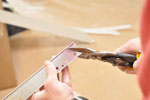
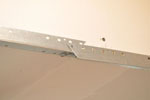
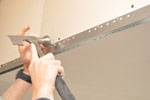
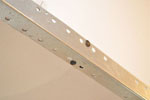
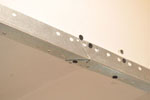
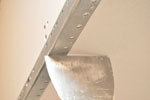
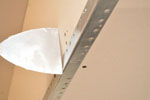
Recommended installation method:
This page contains instructions for installing metal drywall corner bead and then finishing it with joint compound. Outside drywall corners like this can be finished with either metal or paper bead, but metal is the easiest to install and by far choice for durability and professional results. Drywall sheets usually don't come together perfectly at the corners, a metal bead forms its own corner to cover the irregular union. Paper bead can't do that and the finish will appear wavy and irregular when finished.For a durable finish use setting-type joint compound for the first coat over the metal. Ready-mixed can be used for the second and finish coats, but it's too soft and prone to shrinking when used in a thick application like that required to cover metal corner bead. Work quickly when using setting compound to be sure it doesn't harden before you're done.
#1- Cut the bead
Measure the length with a tape measure and cut a piece of bead for each outside corner. Use a pair of tin snips or scissors to cut in from each side of the metal and then bend it in the middle to break it apart.
#2- Fasten with drywall screws
Hold the bead against the corner while pressing hard on the peak with your palm to flatten it tightly to both walls. Start near the top and drive a 1 5|8 or 2 inch drywall screw through one of the small holes in the metal and into the wall frame. Drive a screw into the opposite wall at about the same level, but not directly across, to hold the bead in two places.
Sink the heads of the screws deep enough to slightly kink the metal and make a small depression in the drywall. If the screws are not driven far enough below the surface of the wall, the heads will show through the mud and be very visible. Move along the length pressing at each point and driving the screws at about 12 inch intervals along both walls. Check to be sure the metal is flat the full length of the wall. Run a joint knife over it to check for any spring in the metal and drive a screw at any loose edges.


